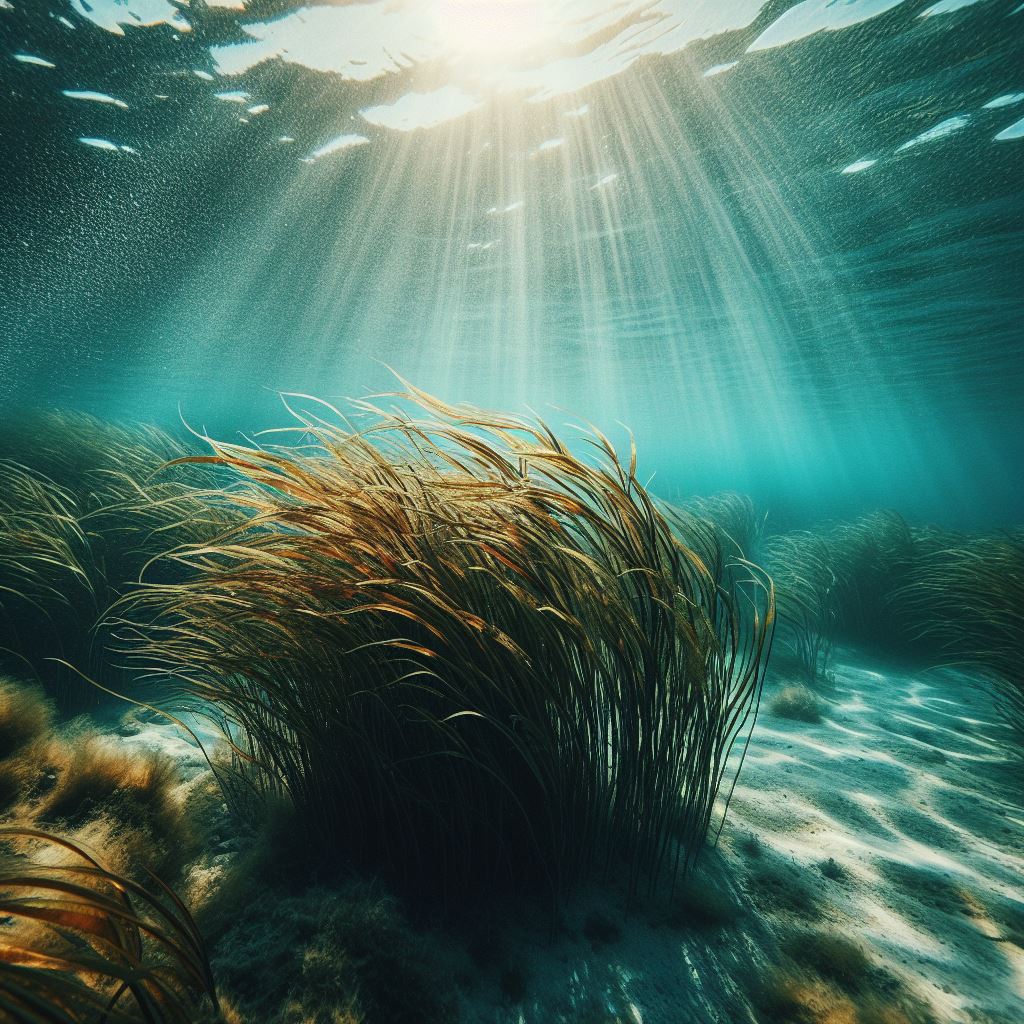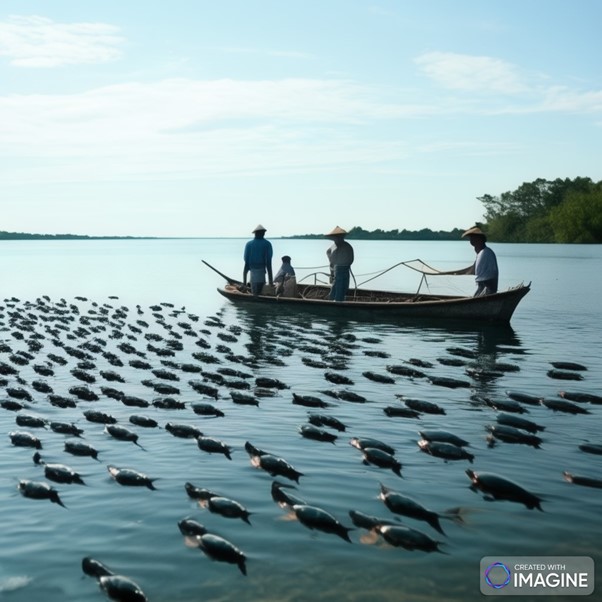By: Dr. Nurleena Wong Wai sin
Oyster is synonym with luxury delicacy and not widely consumed by Malaysian generally. Packed with minerals and protein, oyster is highly nutritious while low in cholesterol and calories. Little known to the younger generations, the Malaysian oyster fishery has more than 150 years of history. True oysters (Crassostrea spp.) in Malaysia are usually found in both brackish and marine environment, thrive at estuarine and mangrove ecosystems. While in Muar, a population of oyster has been living and fished by the people of Muar for generations. Earliest record was found in The Journal of the Indian Archipelago and Eastern in 1858, narrated by Captain R. Macpherson, the then Resident Councilor at Malacca, when he passed through Muar on the way to Melaka:
“The mouth of the river (Sg. Kesang) is famous for its oyster beds, the fish being very large and excellent flavor.”
Sungai Kesang, a smaller river not far from Sungai Muar, was once within the territory of Muar. The oyster fishery at Sungai Kesang is no longer exist due to flood mitigation project.
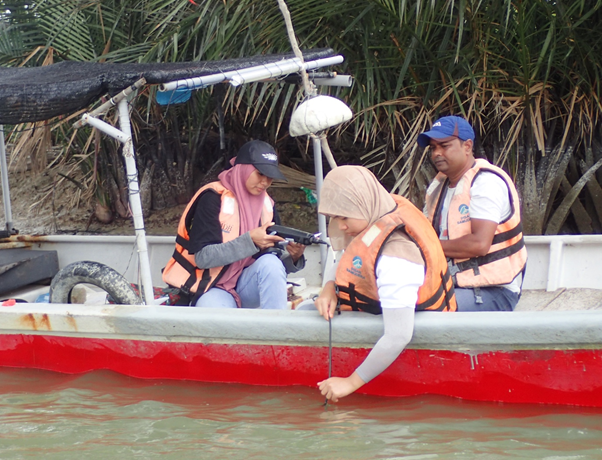
UPM postgraduate students taking environmental data at Sungai Muar, Johor.
Later in the Guide to the Zoological Collections of Raffles Museum, Singapore (1908), R. Hanitsch mentioned that Muar supplied most of the oysters sold in the Singapore market. He narrated that:
“The Muar Oysters are… found in the bed of the river, some near the town of Banda Maharani (now Muar town), others nearer the mouth. The latter are bigger and better quality and are reserved for the Sultan and the officials.”
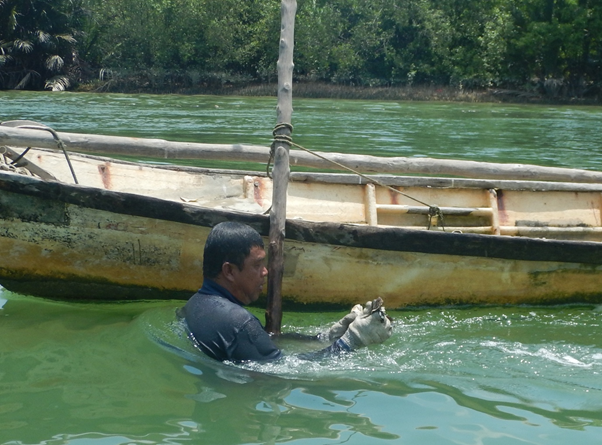
Pak Zainal, a third-generation oyster diver, just returned to water surface with oysters found at the river bottom. The 40 ft mangrove pole served as anchor for boat and lifeline for oyster divers in the rapid currents.
As described by Hanitsch, the fishermen in Sungai Muar are still using the same method to collect oysters, by diving to the river bed during low tide. Holding their breath, they search for oysters with their bare hands, as the visibility is low at the muddy bottom. Today, less than 10 oyster divers remain in this profession. Many of them are third or fourth generation inheriting their oyster diving skills from their forefathers. The oyster population has decreased and oyster diving is no longer a lucrative profession. River is often quoted as one of the most threatened ecosystems highly impacted by anthropogenic stresses.
In order to revive the depleting oyster population in Sungai Muar, I-AQUAS is currently working with Oyster Reef Enterprise to carry out research on the ecology and biology of this oyster population. Continuous harvesting of this natural oyster population is no longer sustainable and aquaculture is a better alternative for sustainable production. The understanding of their habitat and spawning behaviour will provide essential information in the seed production and culture of this oyster species.
Other than the improvement of livelihood for oyster divers, a stable and sustainable oyster population is beneficial to the environment. Oysters are filter feeders, and they are known to contribute in better water quality by compressing suspended solids and depositing excreted solids to the bottom. The formation of bottom oyster reefs could provide shelter and habitat to other organisms thus enriching the biodiversity of aquatic ecosystem. As oyster farming is extractive aquaculture, not only no feeding required for oyster grow-out, they feed on microalgae which will indirectly reduce nutrient pollution which could cause harmful algae bloom.
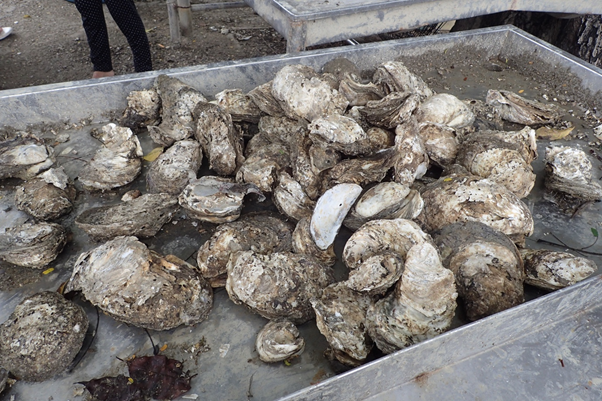
Oysters brought back by oyster-divers sold at the jetty. It can be consumed fresh or made into famous Muar oyster omelette.
With all the above benefits, oyster farming is environmentally friendly and should be encouraged among aquaculturist. Most importantly, the oyster fishery of Muar should be protected as it is part of our national heritage.
Date of Input: 28/03/2020 | Updated: 30/11/2020 | m_fakhrulddin
MEDIA SHARING

















